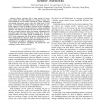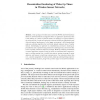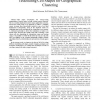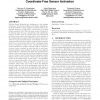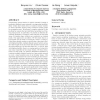113 search results - page 8 / 23 » Asymptotic Coverage and Detection in Randomized Scheduling A... |
VTC
2008
IEEE
14 years 1 months ago
2008
IEEE
— Sensor networks with a large amount of sensor nodes usually have high redundancy in sensing coverage. The network lifetime can be further extended by proper scheduling and putt...
EWSN
2007
Springer
14 years 6 months ago
2007
Springer
Duty-cycling in wireless sensor networks (WSNs) has both beneficial effects on network lifetime and negative effects on application performance due to the inability of a sensor to ...
IEEECIT
2010
IEEE
13 years 5 months ago
2010
IEEE
This paper investigates the energy-saving organization of sensor nodes in large wireless sensor networks. Due to a random deployment used in many application scenarios, much more n...
MOBICOM
2009
ACM
14 years 1 months ago
2009
ACM
Wireless Sensor Networks are emerging as a key sensing technology, with diverse military and civilian applications. In these networks, a large number of sensors perform distribute...
MOBIHOC
2008
ACM
14 years 6 months ago
2008
ACM
Constructing sensor barriers to detect intruders crossing a randomly-deployed sensor network is an important problem. Early results have shown how to construct sensor barriers to ...
